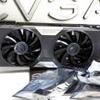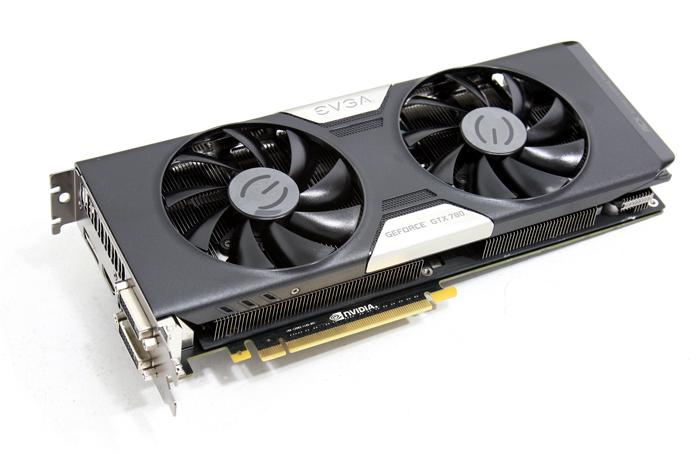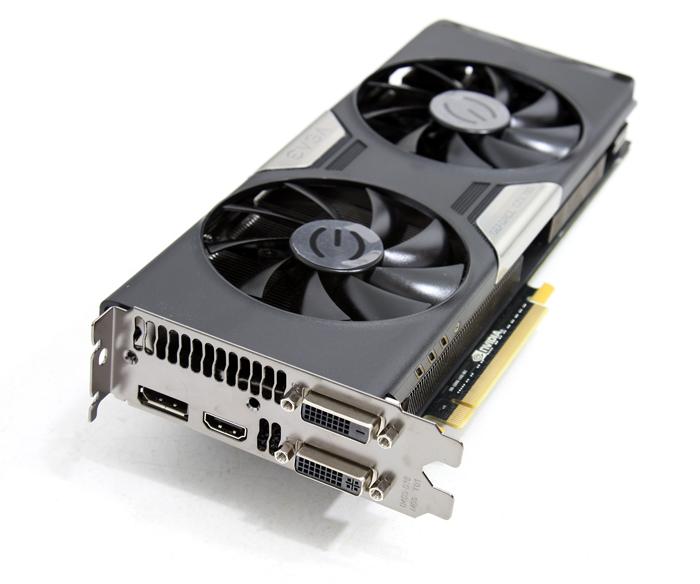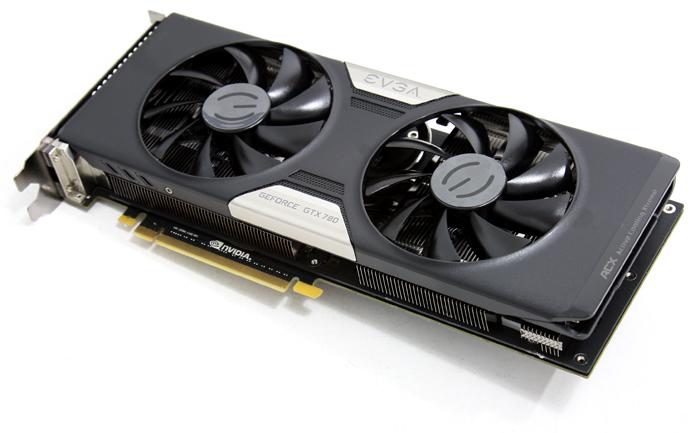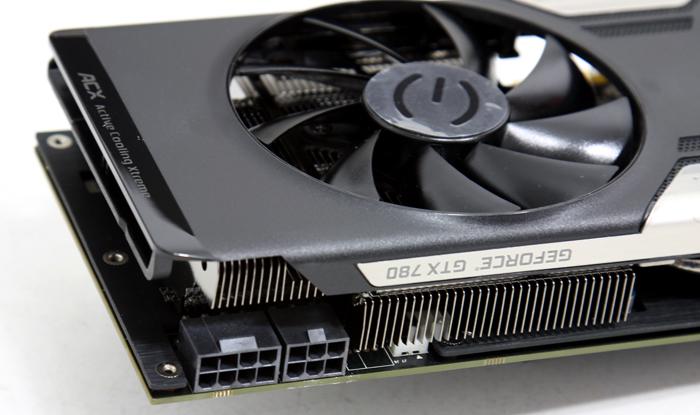Product Showcase
Product Showcase
Alright... pretty pictures time! A couple of pages with photo's then and most of it from our photo-shoot :)
So as you can see the GeForce GTX 780 from EVGA and yeah that does look cool. The card is using the new ACX dual-slot cooler which used two silent 90mm fans, double ball bearing based. ACX is short for Active Cooling Xtreme. The radiator covers the VRM and even memory area. The cooler can dissipate roughly 450W of heat whilst remaining silent. As a result under full load this card manages to stay below 65 degrees C in our testing. Absolutely impressive. The card is 10.5 Inches in length which is like 27 cm for those in that like and reside in the Metric system.
With the GeForce GTX 780 you will receive four display connectors, you'll spot a full size Display port connector, one full size HDMI connector and two DVI connectors (dual-link). You can combine these connectors to setup a surround view (multi-monitor) setup. One card will give you more than sufficient performance to play your games on three monitors. To date we still receive this question a lot, but dual-link DVI does not mean you can hook up two monitors to one connector. Dual-link means double the signal, that way monitor resolutions over 1920x1200 can be supported or you could use a 120Hz monitor. So explained very simple, dual-link DVI supports high-resolution (above 1920x1200) or high-refresh rate (120Hz) monitors.
EVGA offers this SC ACX edition factory clocked for you at 967 MHz (Ref 863) with a Boost clock of 1020 MHz (Ref 900). And as our article will show later on, there's room for tweaking as we got this puppy running stable over 1250 MHz on the boost frequency.
Each GeForce GTX 780 will have a maximum power design of 250 Watts, but they are made to overclock as well. As such Nvidia is using an one 150W 8-pin PEG, and one 75W 6-pin PEG (PCI EXpress Graphics) connector. Another 75 to 150 Watts is delivered though the PCI slot and thus motherboard. This should be plenty for a decent overclocking session.
